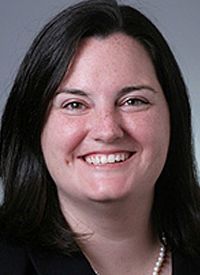Article
Breast Cancer Surgery Choice May Affect Quality of Life in Younger Patients
Author(s):
Younger patients with breast cancer who underwent lumpectomy had better quality of life than women who had a mastectomy.
Laura S. Dominici, MD, FACS

Laura S. Dominici, MD, FACS
Younger patients with breast cancer who underwent lumpectomy had better quality of life (QOL) than women who had a mastectomy, according to study findings presented during the 2018 San Antonio Breast Cancer Symposium (SABCS).
“Historically, about 75 percent of women are eligible for breast-conserving surgery,” lead author Laura S. Dominici, MD, FACS, a surgeon at Dana-Farber/Brigham and Women’s Cancer Center, assistant professor of surgery at Harvard Medical School, and division chief of breast surgery at Brigham and Women’s Faulkner Hospital, said in a press release. “However, over time, more women, and particularly young women, are electing for bilateral mastectomy.” Dominici and colleagues examined QOL outcomes using a multicenter prospective cohort of young women across 3 different surgeries: lumpectomy, unilateral mastectomy, and bilateral mastectomy.
They enrolled 1302 patients in the study; however, 559 were excluded for the following: ineligible post-enrollment/consent withdrawn (n = 5); short form/modified short form participants (n = 91); deceased/lost to follow up (n = 411); and confirmed recurrence or de novo stage IV (n=52).
The remaining 743 patients received BREAST-Q, a validated patient-reported outcomes survey, between October 2016 and November 2017 as a stand-alone survey or as part of their 10-year follow-up. Of those, 584 participants (79%) responded. Twenty-four of them were excluded for confirmed recurrence or because BREAST-Q didn’t match the surgery received. The 560 remaining participants were mainly white (90%), married (77%), financially comfortable (79%), and had college graduate degrees or higher (86%). Median age was 37 years.
Participants were either stage 0 (10%), stage I (38%), stage II (39%), or stage III (14%). Seventy-two percent received chemotherapy and 66% received endocrine therapy within 2 years of survey enrollment. The median time from diagnosis to BREAST-Q completion was 5.8 years (range: 1.9-10.4).
Among participants, 28% had lumpectomy, 20% unilateral mastectomy, and 52% bilateral mastectomy; and 89% of women had reconstructive surgery. Radiation was received by 99% of women who had lumpectomy compared with 45% of women who had mastectomy. And lymphedema was self-reported at year 1 by 20% of participants.
BREAST-Q scores showed that women who had mastectomy (unilateral or bilateral) had lower breast satisfaction, psychosocial well-being, and sexual well-being compared with women who had lumpectomy. However, researchers found that physical function scores were similar among all groups (bilateral mastectomy, 78.7; unilateral mastectomy, 78.9; and lumpectomy, 78.9).
The average BREAST-Q scores for breast satisfaction were: 65.5 for the lumpectomy group, 59.3 for the unilateral mastectomy group, and 60.4 for the bilateral mastectomy group.
Psychosocial well-being scores were lowest among the bilateral mastectomy group (68.4) compared with 70.6 for the unilateral mastectomy group and 75.9 for the lumpectomy group.
For sexual well-being, the lumpectomy group had a score of 57.4 compared with 53.4 for the unilateral mastectomy group and 49.0 for the bilateral mastectomy group.
“These findings suggest that surgical choices may have long-term impact on quality of life,” Dominici said. “We really need to have more data about quality of life, particularly after surgery, because this information can help shape their decisions.”
Researchers then conducted a multivariate analysis looking at beta coefficient (β). For patient satisfaction with breasts, unilateral (β -8.7; P < .001) and bilateral (β -9.3; P < .001) mastectomy had large decreases in satisfaction compared with those who had lumpectomy. Decreases were also seen in patients who had radiation (β -7.5; P < .001) and those who reported being financially uncomfortable (β -5.4; P = .02).
Regarding physical well-being, patients who reported lymphedema (β -6.4; P < .001) and being financially uncomfortable (β -4.8; P .004) had moderate decreases in QOL versus those who did not, Dominici said. Patients who were 5 years out from surgery had better QOL (β 6.0; P < .001).
For psychosocial well-being, lumpectomy was associated with a large improvement in QOL compared with patients having unilateral (β -8.3; P = .001) or bilateral (β -10.5; P < .001) mastectomy, Dominici said. There was also a decrease in patients who received radiation (β -6.0; P = .003) and in those who reported being financially uncomfortable (β -7.0); P = .003). In addition, having a BMI of ≥ 25 had a moderate decrease in QOL (β -4.2; P = .03), she said.
In sexual well-being, the multivariate analysis showed a large decrease in QOL for patients undergoing unilateral (β -3.7; P = .15) and bilateral (β -8.1; P < .001) mastectomy. Being financially uncomfortable (β -6.8; P = .004), having a BMI ≥ 25 (β -5.3; P = .006), and lymphedema (β -3.8; P = .05) was also associated with a decrease.
“I think the more prospective data that we generate to help us figure out which patients are going to have worse or better outcomes with these different types of surgeries, the better we will be able to counsel patients with things that will be meaningful to them in the long run,” Dominici said during a press conference at the meeting.
Moderator C. Kent Osborne, co-director of SABCS and director of the Dan L Duncan Cancer Center at Baylor College of Medicine in Houston, weighed in on the findings: “The data are more disconcerting when you consider the high mastectomy rate in this country relative to Europe,” he said. “And this urge to have bilateral mastectomies, which, pardon the expression, is ridiculous, in some cases, because it doesn’t improve your outcome and yet it does have deleterious effects that last for years such as psychologically.”
Dominici L, Hu J, King T, et al. Local therapy and quality of life outcomes in young women with breast cancer. Presented at: 2018 San Antonio Breast Cancer Symposium (SABCS); Dec. 4—8, 2018; San Antonio, Texas.
















%20(2)%201-Recovered-Recovered-Recovered-Recovered-Recovered-Recovered-Recovered-Recovered-Recovered-Recovered-Recovered-Recovered-Recovered-Recovered-Recovered-Recovered-Recovered.jpg?fit=crop&auto=format)
%20(2)%201-Recovered-Recovered-Recovered-Recovered-Recovered-Recovered-Recovered-Recovered-Recovered-Recovered-Recovered-Recovered-Recovered-Recovered-Recovered-Recovered-Recovered.jpg?fit=crop&auto=format)
